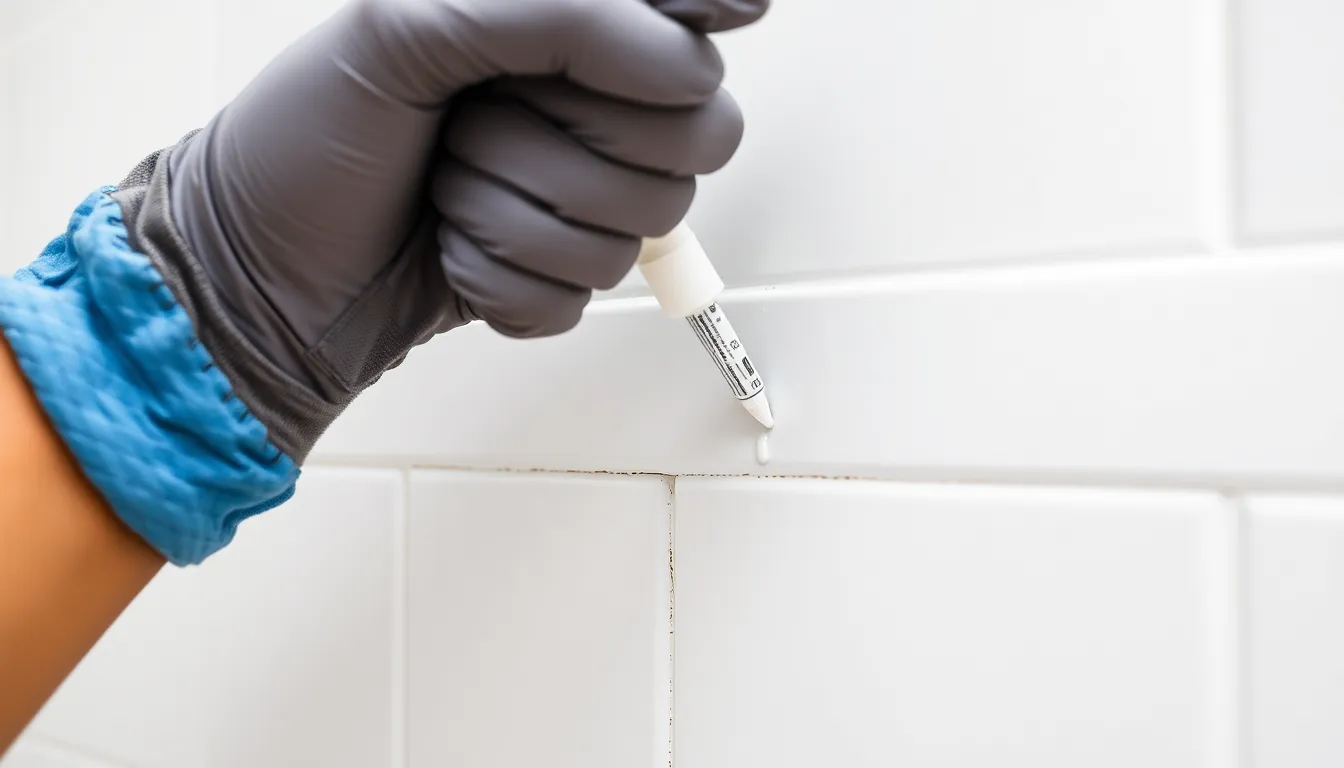Caulk plays a crucial role in home improvement projects, sealing gaps and preventing moisture damage. However, many homeowners often overlook one important aspect: drying time. Understanding how long it takes for caulk to dry can save time and ensure a successful application.
Different types of caulk have varying drying times based on their composition, environmental conditions, and the surface they’re applied to. Whether it’s silicone, acrylic, or polyurethane, knowing the drying time helps avoid mishaps and ensures a durable seal. In this article, readers will discover the factors affecting caulk drying time and tips for achieving the best results.
Table of Contents
ToggleUnderstanding Caulk
Caulk is a vital component in home improvement projects, utilized to seal joints and gaps. Its effectiveness in moisture prevention depends on its formulation and application.
What Is Caulk?
Caulk is a flexible material designed to fill gaps and cracks in various surfaces. It acts as a barrier against air, water, and pests. Common ingredients include polymers, silicone, latex, and acrylic. When applied correctly, caulk helps enhance energy efficiency and prolongs the lifespan of structures.
Types of Caulk
- Silicone Caulk: Ideal for areas exposed to moisture, such as bathrooms and kitchens. It provides excellent flexibility and adheres well to non-porous surfaces.
- Acrylic Latex Caulk: Suitable for interior use, this type is paintable and easy to clean with water. It’s commonly used for windows and trim.
- Polyurethane Caulk: Offers strong adhesion and durability. This type is perfect for outdoor projects and can be sanded and painted.
- Butyl Rubber Caulk: Known for its weather resistance, it excels in outdoor applications, particularly on roofs and gutters.
- Hybrid Caulk: Combines properties of different caulks, providing versatility for various applications. It features the benefits of both silicone and acrylic formulations.
Factors Affecting Drying Time


Drying time for caulk varies based on several factors, with environmental conditions and caulk type playing significant roles. Understanding these factors helps achieve optimal results in sealing gaps and cracks.
Humidity and Temperature
Humidity and temperature directly impact caulk’s drying time. High humidity slows down the evaporation of moisture in caulk, extending drying duration. Conversely, low humidity increases evaporation, leading to faster drying. Temperature also matters; warmer conditions typically accelerate drying while colder temperatures can prolong it. For instance, a temperature of 70°F (21°C) with low humidity promotes quicker drying compared to 50°F (10°C) in a humid environment.
Type of Caulk Used
The type of caulk significantly influences how long it takes to dry. Silicone caulk dries faster than acrylic latex, often requiring 24 hours for full cure. Acrylic latex caulk may need up to 48 hours, especially in humid conditions. Polyurethane caulk, known for its durability, typically takes longer, often reaching full cure in up to 10 days. Choosing the appropriate caulk type ensures efficiency based on the specific application needs.
General Drying Times
Caulk drying times vary based on the type of caulk, environmental conditions, and surface material. Understanding these times helps in planning home improvement projects effectively.
Typical Drying Times for Different Types
- Silicone Caulk: Typically dries within 1 to 2 hours for a surface skin. Full curing may take up to 24 hours.
- Acrylic Latex Caulk: Generally dries to the touch in approximately 30 minutes. Full curing can extend for up to 48 hours.
- Polyurethane Caulk: Often takes around 2 to 4 hours to dry to the touch, with full curing periods reaching up to 10 days.
- Butyl Rubber Caulk: Usually dries in about 1 to 2 hours. Complete curing may require 7 to 14 days.
- Hybrid Caulk: Commonly dries in 1 to 3 hours, with full curing taking up to 24 hours.
| Caulk Type | Dry to Touch | Full Cure |
|---|---|---|
| Silicone | 1-2 hours | 24 hours |
| Acrylic Latex | 30 minutes | 48 hours |
| Polyurethane | 2-4 hours | Up to 10 days |
| Butyl Rubber | 1-2 hours | 7-14 days |
| Hybrid | 1-3 hours | 24 hours |
Recommendations for Different Projects
- Bathroom Projects: Use silicone caulk. Its moisture resistance is crucial for wet environments. Allow at least 24 hours for a complete cure before exposing to water.
- Kitchen Projects: Consider acrylic latex caulk. It’s paintable and suitable for areas needing quick drying. A wait of 48 hours ensures optimal adhesion before heavy use.
- Exterior Projects: Select polyurethane caulk for durability against the elements. Grant up to 10 days for full curing to withstand temperature fluctuations.
- Window and Door Sealing: Both silicone and hybrid caulks provide flexibility. Give 24 hours for proper curing to maintain effective seals.
- General Repairs: Acrylic latex is versatile. Drying times of 30 minutes to 48 hours work well for various interior repairs.
Understanding drying times ensures effective caulk performance across diverse home improvement projects.
Tips for Faster Drying
Using effective strategies can significantly reduce drying time for caulk. Implementing proper application techniques and considering environmental factors leads to optimal results.
Proper Application Techniques
- Use a Caulking Gun: A caulking gun allows for even application, reducing excess caulk that prolongs drying time.
- Apply in Thin Layers: Thinner layers of caulk dry faster than thick applications. Aim for a maximum layer thickness of 1/8 inch.
- Smooth the Surface: Smoothing caulk with a wet finger or a tool increases adhesion and prevents air bubbles, which aids quicker drying.
- Clean Surfaces: Ensure all surfaces are free from dust, mildew, or grease before application to enhance adherence and drying speed.
- Follow Manufacturer’s Instructions: Each caulk type has specific guidelines. Adhering to recommended methods leads to quicker drying.
Environmental Considerations
- Increase Temperature: Applying caulk in warmer conditions, ideally above 70°F (21°C), promotes faster drying.
- Reduce Humidity: Lower humidity levels facilitate moisture evaporation, speeding up the drying process. Aim for humidity levels below 50% when possible.
- Use Fans or Dehumidifiers: Introducing airflow with fans or reducing humidity with dehumidifiers aids in drying faster.
- Provide Adequate Ventilation: A well-ventilated area enables better air circulation, promoting quicker evaporation of moisture.
- Avoid Cold Surfaces: Ensure surfaces are at room temperature before applying caulk. Cold surfaces slow down drying times significantly.



